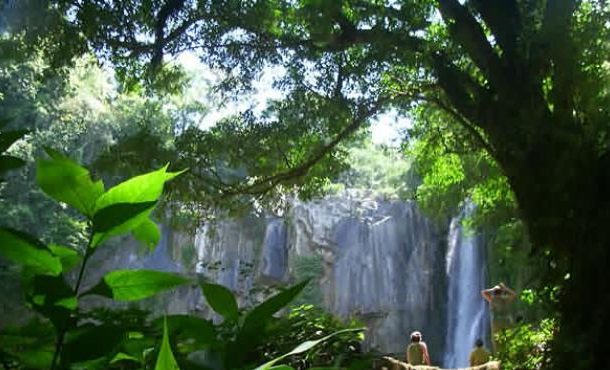Many communities in Ghana have seen significant transformation through Eco-tourism. Like what has been done with cocoa, gold and recently oil, eco-tourism can be used to mobilize revenue for community development. Eco-tourism and tourism work toward the combined goal of fostering visitor’s enjoyment and earning money for the respective destinations and the local people within the catchment area.
According to the International Eco-tourism Society (TIES), eco-tourism involves travel to natural areas that conserves the environment and sustains the well-being of the local people. Destinations where flora , fauna , and cultural heritage are located are usually the primary attractions. Eco-tourism is a major social phenomenon of modern societies with enormous economic benefits which can ensure sustainable development of the areas where they are located.
Since the late 1980s eco-tourism has received considerable attention in the economic transformational strategy of Ghana due to its positive impact on communities. The number of tourist arrivals and amount of tourist expenditure has progressively increased, while both public and private investments in the various eco-tourism sub-sectors have expanded considerably.
According to the recently released hospitality report for Ghana, the tourism industry contributed 7.8% of the country’s GDP for last year. Tourism also ranked fourth on the high foreign exchange earnings list after gold, cocoa and oil. With the numerous rich natural endowments, a lot more can be done in eco-tourism by the government and the relevant stakeholders in the industry to promote patronage by tourists.
So far, there are about forty-two (42) eco-tourism sites discovered in Ghana, where tourists from all over the world visit annually. Few of such areas include the Aburi Botanical Gardens in the Eastern Region, Boabeng Fiema Monkey Sanctuary in Brong Ahafo, Butterflies Sanctuary at Bobiri Forest, Ashanti, Vli Waterfalls in Volta Region, Nzulezu River in The Western Region, Kakum National Park in Central Region, Crocodile Pond at Paga in Upper East Region, Gambaga Scalp in the Northern Region, Mole National Park in Upper West, Shai Hills in Greater Accra and many more places. Some of these sites have seen some form of face lift through public and private partnership interventions, under the supervision of the Ministry of Tourism, Culture and Creative Arts.
Interestingly, the focus has always been on promoting the ecological sites mentioned above, rather than educating community members on what can be done with flowers, which apart from their decorative purposes can also generate huge foreign exchange for the country. In countries like Cambodia, India, Kenya, Zimbabwe etc. flower export has been a significant source of foreign exchange earnings. In these countries the Governments have undertaken cost benefit analysis of the industry and ascertained the weaknesses, strength, opportunities and provided the necessary resources to boost flower cultivation for export.
To reap the full benefits of this floriculture and horticulture industry, the Government of Ghana should give some attention to this sector by partnering with organizations which have the expertise in the field to develop capacity of communities to take up flower production.
In recent times, Stratcomm Africa in collaboration with the relevant stakeholders in the horticultural industry has been holding the Ghana Garden and Flower Show to promote horticulture and floriculture as a viable business venture.
By successfully holding the Ghana Garden and Flower Show since 2013, visibility has been created, which is gradually sensitizing the public and communities on how they can earn a living through the cultivation of flowers. To be able to make the flower business viable, market opportunities need to be created through effective networking and support from Government to promote access to the international markets. This will serve as motivation for people to take up the flora business.
The beautiful parks and gardens Ghana used to have in all the Regions are dying off, due to lack of ingenuity in turning the parks and gardens into an attractive, viable eco-tourism sites to generate revenue to support development of local communities.
Eco-tourism has tremendous multiplying effects, which can help transform lives of communities and the nation at large. Eco-tourism can be used to reduce rural urban drift as well as enhance existing traditional jobs in communities. Infrastructure around the sites especially in areas where patronage is high has been developed through Government intervention. Also, through fees and charges collected for patronizing these sites, many government projects have been executed. Again, eco-tourism has enhanced relationships among communities, governments and the various stakeholders, which has helped in bringing some of the sites to internationally acceptable standards.
Despite the enormous benefits at stake, some hindrances are envisaged. Some of the challenges are under development of the sites due to the fact that they are largely located in rural areas, limited recognition of ecotourism as a sustainable community development tool, inadequate community involvement and lack of professionalism. There is therefore the need for the Government, communities and relevant stakeholders to effectively and efficiently manage activities in the industry to increase patronage and promote local business opportunities.
From all that has been said, it is clear that much more can be done with eco-tourism to help facilitate the transform of communities in Ghana. Creating the necessary environment for the cultivation of flowers can help reduce unemployment among the youth and the vulnerable in society. The organizers of the annual Ghana Garden and Flower Show deserve commendation for the great opportunities being created for people to see the enormous benefits involved in growing flowers and keeping gardens.
source:modernghana


Comments